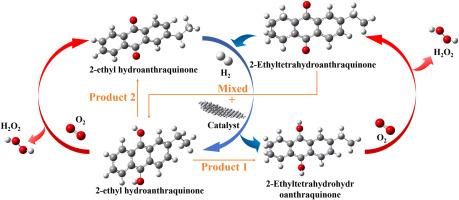Systemic risk control in anthraquinone-based hydrogen peroxide synthesis: A technical review
IF 4.2
3区 工程技术
Q2 ENGINEERING, CHEMICAL
Journal of Loss Prevention in The Process Industries
Pub Date : 2025-05-23
DOI:10.1016/j.jlp.2025.105689
引用次数: 0
Abstract
The anthraquinone process, the dominant method for global hydrogen peroxide production, poses complex safety challenges due to the handling of highly reactive substances, despite operating under relatively moderate temperature and pressure conditions. This review provides a comprehensive analysis of the primary safety hazards associated with each stage of the process, including hydrogenation, oxidation, extraction, and purification. Critical risk factors, such as the formation of explosive hydrogen-oxygen mixtures and the autocatalytic decomposition of hydrogen peroxide are thoroughly examined. The review systematically examines advanced safety strategies for hazard mitigation, with particular focus on precision pressure control, pH stabilization, solvent optimization, and automated process control systems. Furthermore, the importance of continuous equipment monitoring, solvent volatility profiling, and system integrity assessments is highlighted as key to ensuring safe and stable operations. Looking ahead, future research should focus on the development of next-generation catalysts with enhanced selectivity, as well as the integration of real-time safety monitoring and predictive maintenance technologies. These innovations are crucial for managing the increasing complexity of large-scale hydrogen peroxide production, ensuring both operational efficiency and inherent safety as industrial demands evolve.

蒽醌类过氧化氢合成的系统性风险控制技术综述
蒽醌工艺是全球过氧化氢生产的主要方法,尽管在相对温和的温度和压力条件下操作,但由于处理高活性物质,它带来了复杂的安全挑战。这篇综述提供了一个综合分析的主要安全隐患与过程的每个阶段,包括氢化,氧化,提取和纯化。关键的危险因素,如爆炸性氢-氧混合物的形成和过氧化氢的自催化分解进行了彻底的检查。该综述系统地研究了减轻危害的先进安全策略,特别关注精密压力控制、pH稳定、溶剂优化和自动化过程控制系统。此外,连续设备监测、溶剂挥发性分析和系统完整性评估的重要性被强调为确保安全稳定运行的关键。展望未来,未来的研究应侧重于开发具有更高选择性的下一代催化剂,以及集成实时安全监测和预测性维护技术。随着工业需求的发展,这些创新对于管理日益复杂的大规模过氧化氢生产至关重要,可以确保运营效率和固有安全性。
本文章由计算机程序翻译,如有差异,请以英文原文为准。
求助全文
约1分钟内获得全文
求助全文
来源期刊
CiteScore
7.20
自引率
14.30%
发文量
226
审稿时长
52 days
期刊介绍:
The broad scope of the journal is process safety. Process safety is defined as the prevention and mitigation of process-related injuries and damage arising from process incidents involving fire, explosion and toxic release. Such undesired events occur in the process industries during the use, storage, manufacture, handling, and transportation of highly hazardous chemicals.

 求助内容:
求助内容: 应助结果提醒方式:
应助结果提醒方式:


